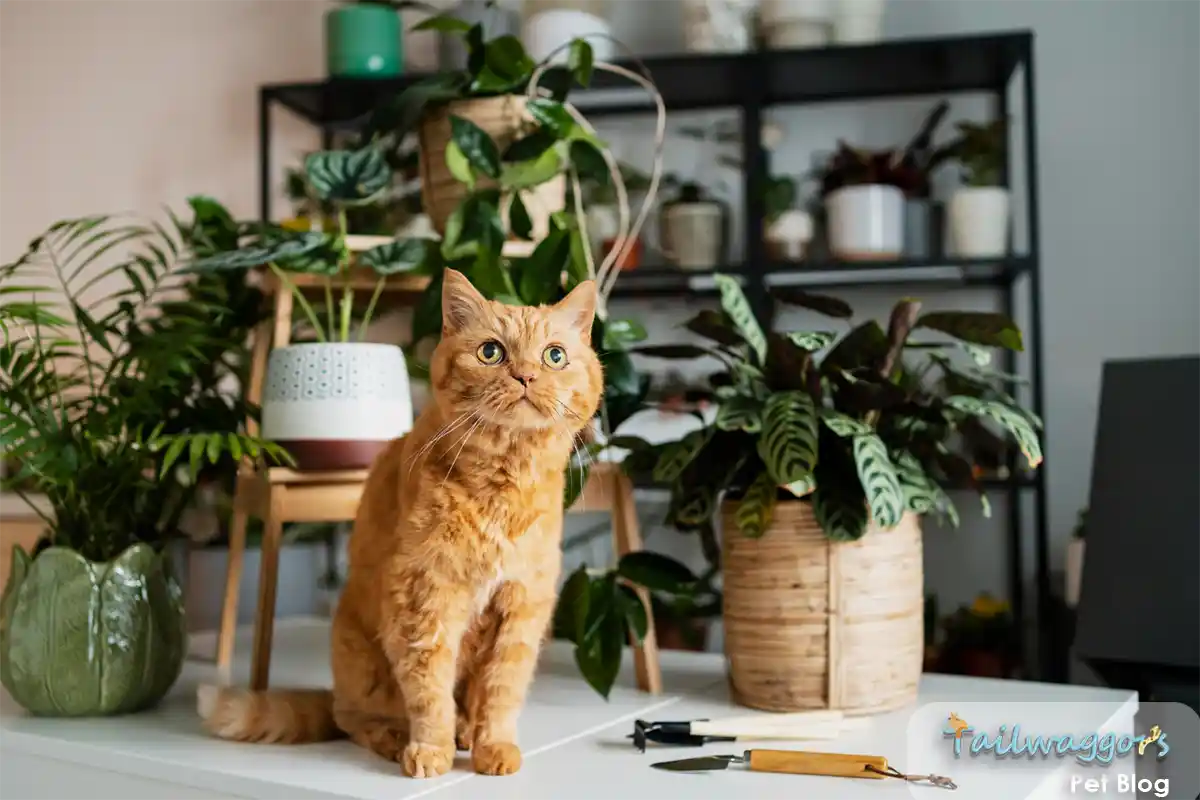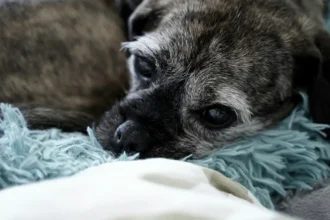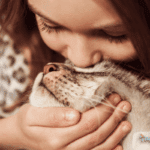Did you know that over 25% of cats will ingest a poisonous substance at some point in their lives, with toxic plants being one of the most common culprits? As dedicated cat owners, we understand the worry that comes with bringing new plants into a home with curious felines. Your cat’s safety is our top priority, which is why we’ve created this comprehensive guide to identifying and avoiding common houseplants that pose serious risks to cats.
Written by Dr. Esther Knoetze, this ultimate reference covers everything from the top 11 most dangerous plant varieties in the U.S. to preventing and handling potential poisoning incidents. With clear photos, actionable tips, and expert insights, you’ll have all the information you need to cultivate a cat-friendly indoor garden.
Understanding Plant Toxicity in Cats
Unlike their canine counterparts, cats are obligate carnivores with a limited ability to detoxify plant-based compounds (Morelli et al., 2020). This evolutionary quirk makes them more susceptible to the harmful effects of certain vegetation.
It’s also crucial to recognize that no plant is entirely “cat-safe.” Even varieties marketed as pet-friendly can cause adverse reactions in some felines. As Dr. Renee Schmid, a senior veterinary toxicologist at Pet Poison Helpline, warns, “The best way to prevent plant poisoning is to keep all plants out of reach of curious cats.”
- 🔍 Taste & Smell: Plants with bitter tastes or strong odors may be nature’s warning signal
- 💧 Sap Features: Watch for milky sap or unusual residue on stems or leaves
- 🌵 Leaf Structure: Be cautious of spiny, pointed, or serrated leaf edges
- 🌱 Underground Parts: Pay attention to plants with bulbs, tubers, or rhizomes
If you’re unsure about a particular species, err on the side of caution and consult our toxic plant database before bringing it home.
Top 11 Toxic Plants for Cats
While countless plants contain feline-unfriendly compounds, these ten varieties account for the majority of cat poisonings reported each year (ASPCA Animal Poison Control Center, 2023):
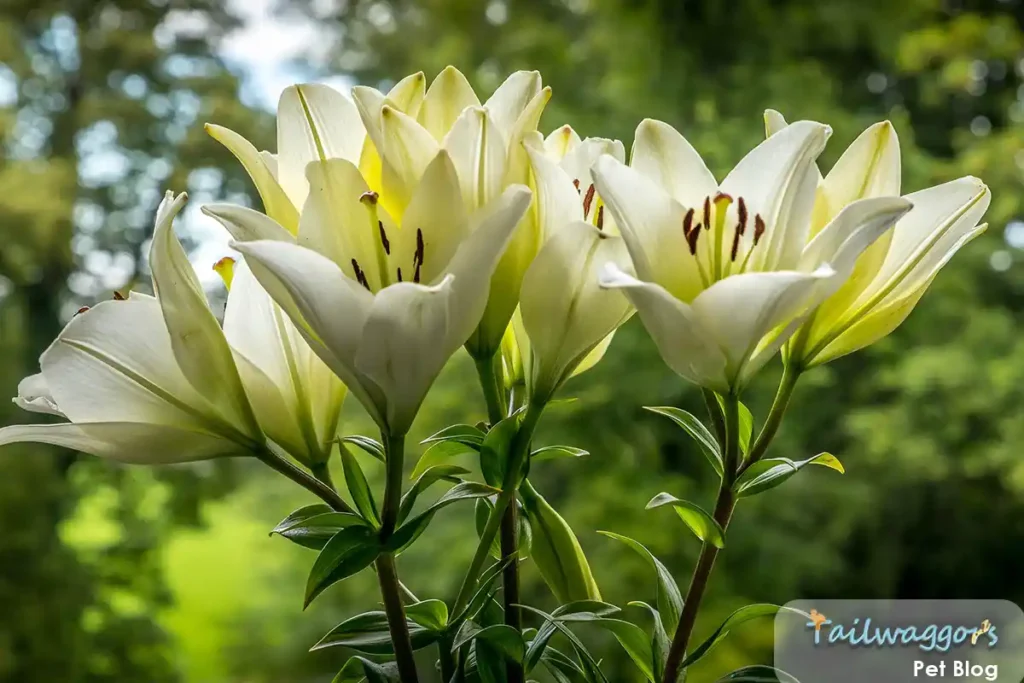
- Lilies (Lilium spp.)
- Toxicity Level: Severe, potentially fatal
- Symptoms: Vomiting, kidney failure, death
- Toxic Parts: All, including pollen
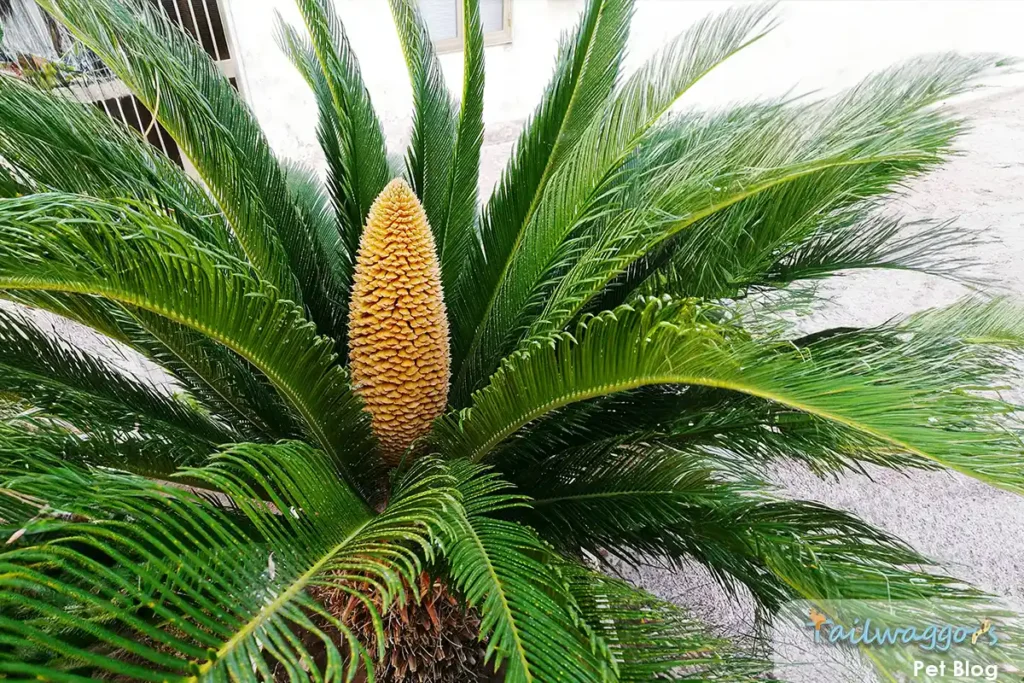
2. Sago Palm (Cycas revoluta)
- Toxicity Level: Severe
- Symptoms: Vomiting, jaundice, hemorrhage, death
- Toxic Parts: Seeds, leaves
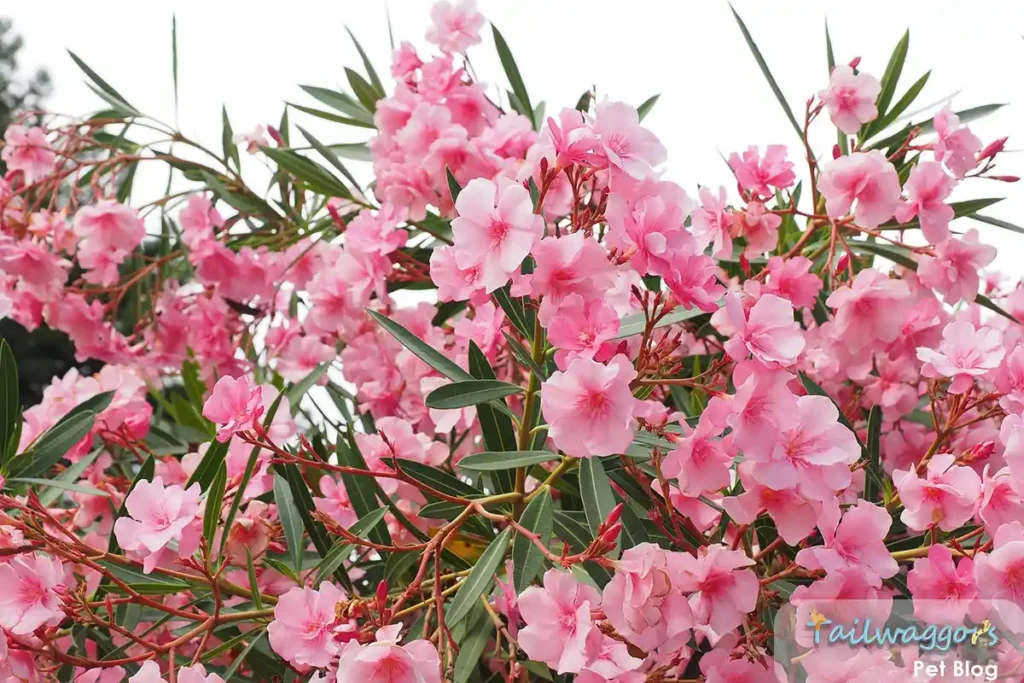
3. Oleander (Nerium oleander)
- Toxicity Level: High
- Symptoms: Arrhythmia, vomiting, tremors
- Toxic Parts: All, especially leaves
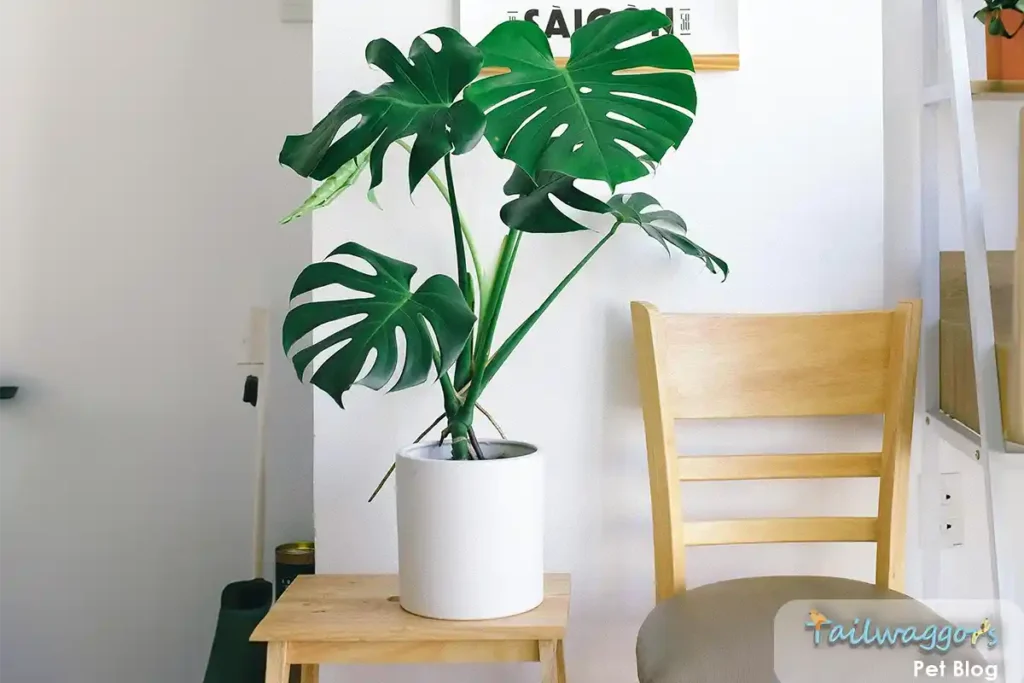
4. Monstera (Monstera deliciosa)
- Toxicity Level: Mild to Moderate
- Symptoms: Mouth and throat irritation, drooling, difficulty swallowing and vomiting.
- Toxic Parts: Leaves, stems
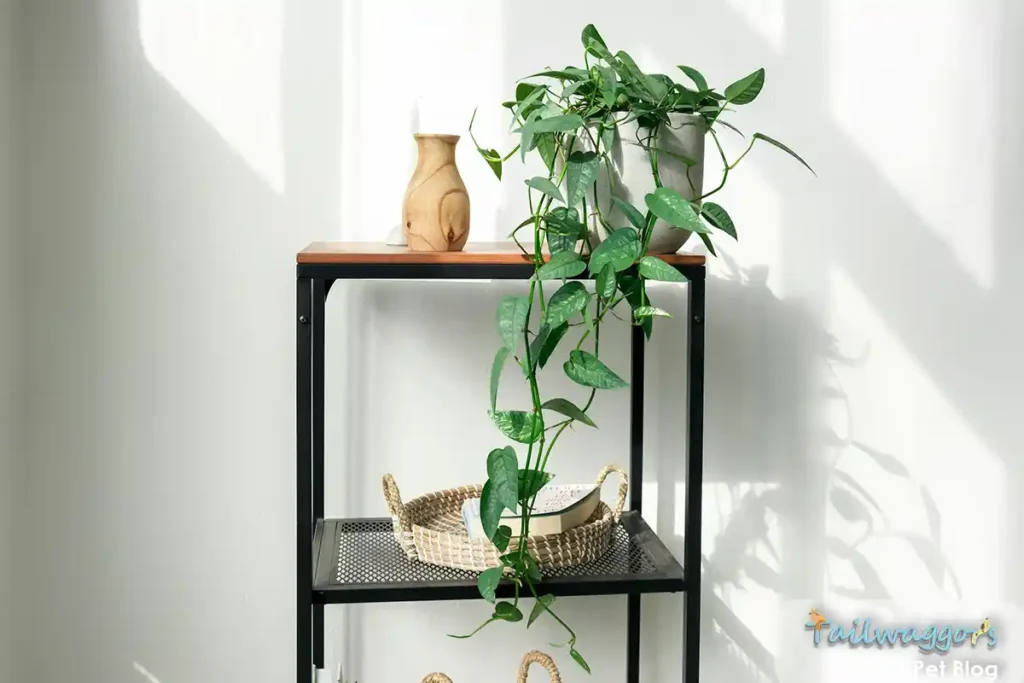
5. Pothos (Epipremnum aureum)
- Toxicity Level: Moderate to High
- Symptoms: Drooling, vomiting, swelling
- Toxic Parts: Leaves, stems
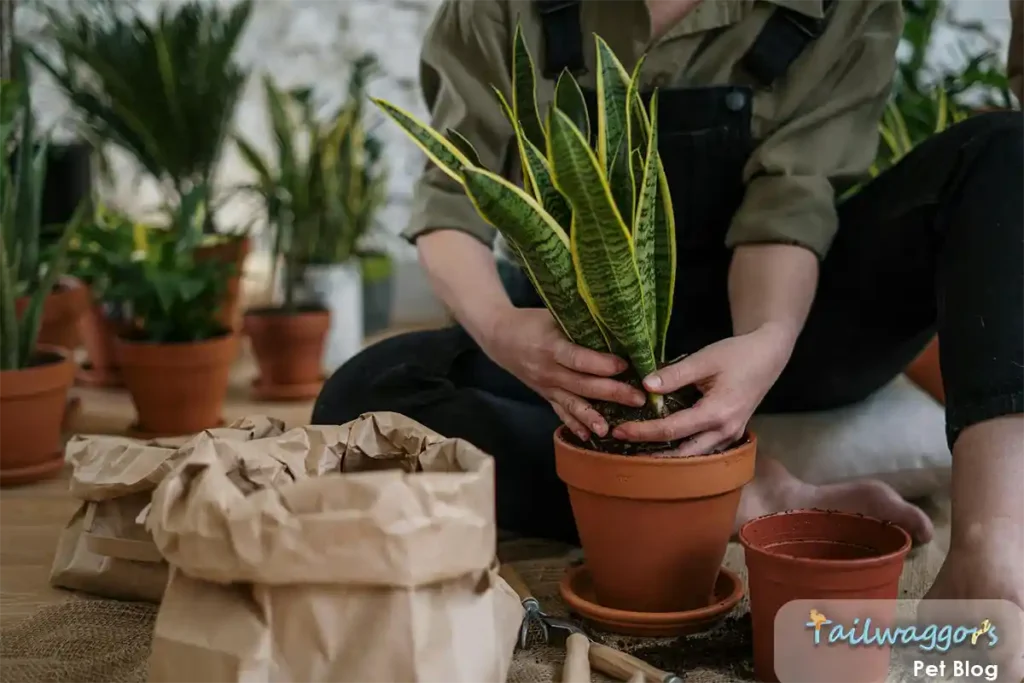
6. Snake Plant (Sansevieria trifasciata)
- Toxicity Level: Mild to moderate
- Symptoms: Mouth irritation, vomiting, diarrhea
- Toxic Parts: Leaves
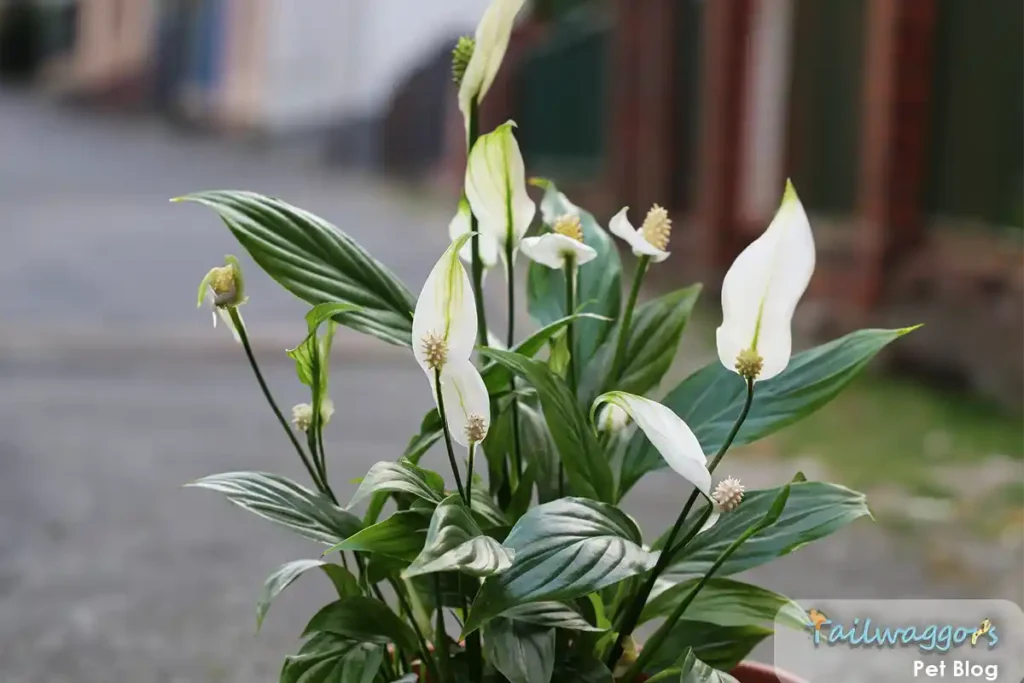
7. Peace Lily (Spathiphyllum)
- Toxicity Level: Mild to moderate
- Symptoms: Mouth irritation, excessive drooling
- Toxic Parts: Leaves, flowers
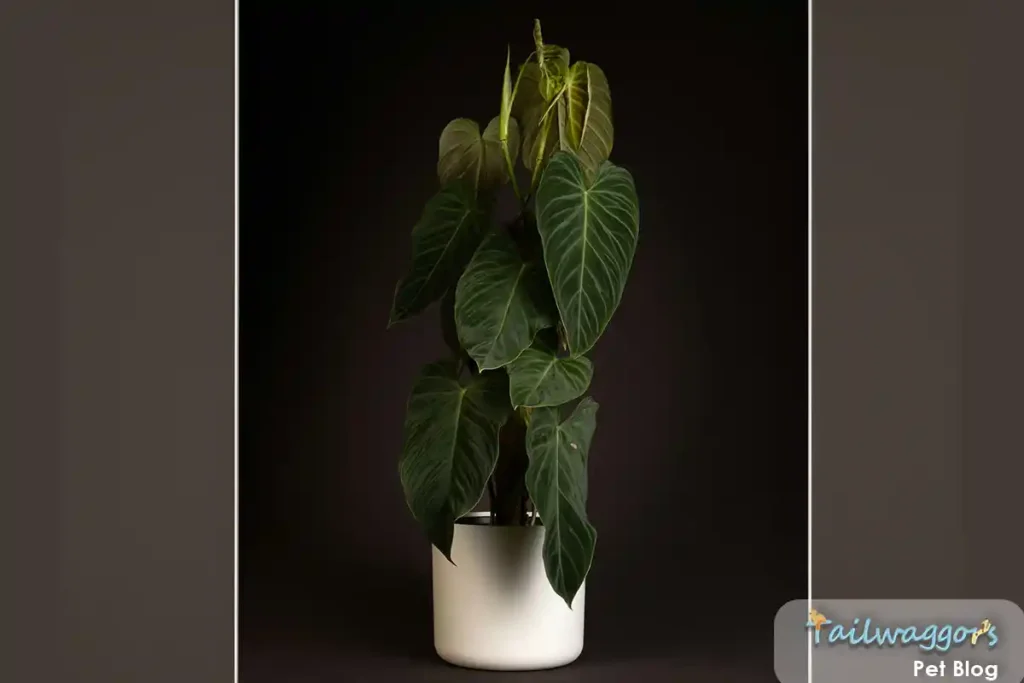
8. Philodendron
- Toxicity Level: Mild to moderate
- Symptoms: Burning, swelling of mouth and throat
- Toxic Parts: Leaves, stems
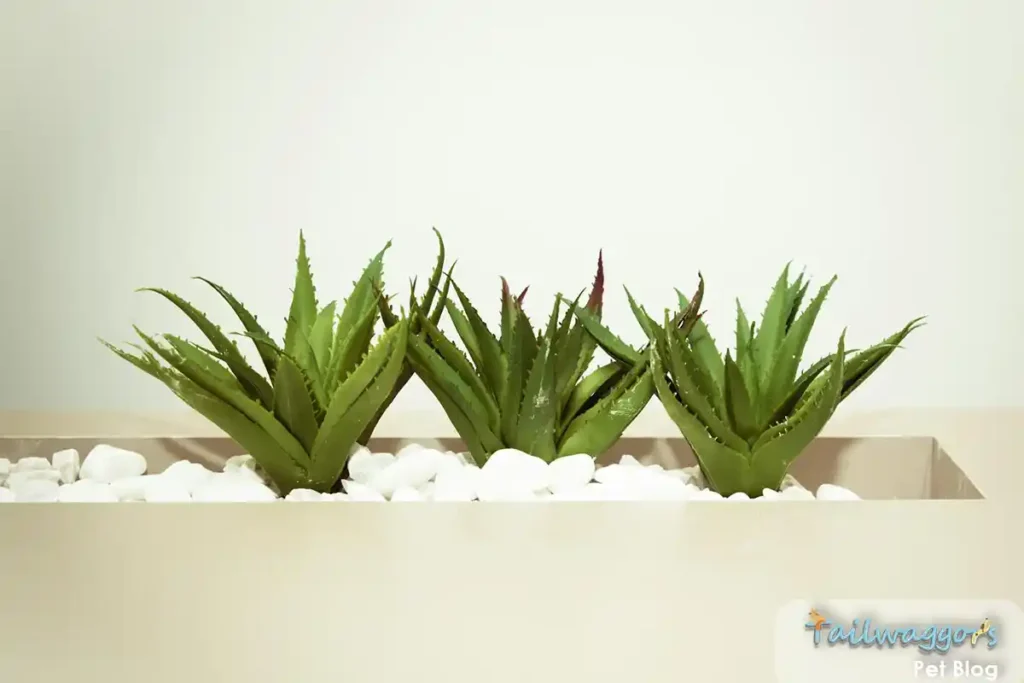
9. Aloe Vera
- Toxicity Level: Mild to moderate
- Symptoms: Vomiting, diarrhea, tremors
- Toxic Parts: Leaves
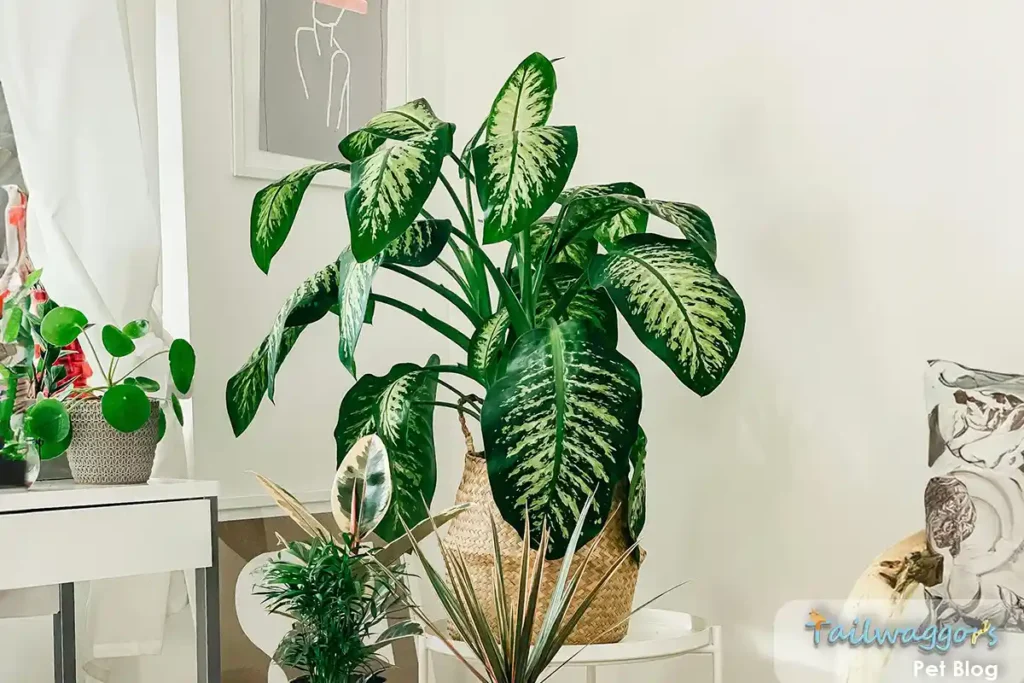
10. Dieffenbachia
- Toxicity Level: Mild to moderate
- Symptoms: Mouth irritation, drooling, vomiting
- Toxic Parts: Leaves, stems
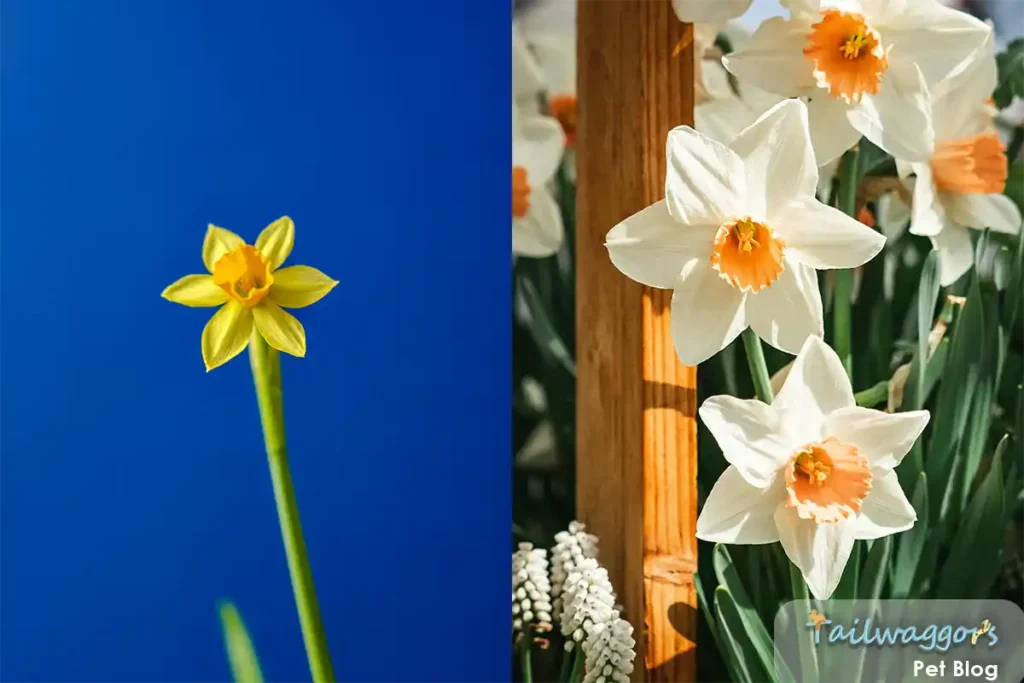
11. Amaryllidaceae Family (Daffodils, Amaryllis)
- Toxicity Level: Moderate
- Symptoms: Mouth irritation, drooling, vomiting, diarhea, abdominal pain, tremors or seizures, cardiac arrhythmias.
- Toxic Parts: Leaves, stems
To help you quickly identify these common offenders, we’ve compiled a visual guide with key characteristics and high-resolution photos. Download and print a copy to keep on hand when plant shopping or assessing your current collection.
Other Toxic Plant Families
In addition to the top ten, hundreds of other plants contain substances that can sicken cats. Some of the most problematic plant families include:
- Araceae (Philodendron, Monstera, Pothos)
- Araliaceae (Ivy, Devil’s backbone)
- Asparagaceae (Lilies, Daylilies, Hyacinths)
- Euphorbiaceae (Poinsettia, Crown of thorns)
- Malvaceae (Hibiscus, Hollyhocks)
For a complete list of toxic and non-toxic plants, visit the ASPCA’s searchable database. Keep in mind that many plants have multiple common names, so always cross-reference the scientific name to confirm toxicity status.

Preventing Plant Poisoning in Cats
Cats are naturally curious creatures, and their tendency to explore with their mouths can lead to accidental plant poisoning. Their unique metabolism makes them highly sensitive to plant-based toxins, so even small ingestions of certain plants can have significant effects. Creating a safe environment for your feline companion is essential for their health and well-being.
The best way to protect your cat from plant poisoning is to keep all greenery well out of reach. However, even the most diligent owners may find their feline friend occasionally nosing around the houseplants. Here are some steps you can take to minimize the risk:
1. Keep Toxic Plants Out of Reach
- Remove known toxic plants from your home or garden.
- Place plants in high; use elevated shelves, hanging planters, or enclosed terrariums to keep greenery out of reach of curious paws.
- Use pet-proof plant stands or cages to block access
- Provide plenty of cat-friendly alternatives like catnip or cat grass
- Regularly inspect plants for signs of chewing or disturbance
- Consider using bitter sprays as a deterrent (with vet approval)
2. Opt for Cat-Safe Plants
If you love having plants around your home, choose varieties that are non-toxic to cats. These options are safe, beautiful, and easy to care for:
- Spider Plants (Chlorophytum comosum): Hardy and decorative with a natural air-purifying ability.
- Boston Ferns (Nephrolepis exaltata): A classic choice for adding lush greenery without risk.
- African Violets (Saintpaulia): Vibrant flowering plants that are safe for cats and add a pop of color.
- Bamboo Palm (Chamaedorea seifrizii): A pet-safe option that adds a tropical vibe to your home.
- Calathea (Calathea spp.): Known for its striking foliage and non-toxic properties.
Note: Even non-toxic plants can cause mild digestive upset if ingested in large amounts. Additionally, ensure that any plants are free from pesticides or fertilizers, which can be harmful to cats.
3. Supervise Outdoor Time
When your cat is outdoors, keep an eye on their activity to ensure they aren’t nibbling on harmful plants in your garden or neighborhood. For added safety, consider creating a secure outdoor catio to provide fresh air and safe exploration.
4. Create a Cat-Safe Zone
Designate a plant-free area for your cat to roam freely without risk. Alternatively, set up a pet-friendly herb garden with safe options like catnip, parsley, or wheatgrass to satisfy their curiosity.
5. Educate Yourself and Stay Informed
Regularly update your knowledge about toxic and non-toxic plants by consulting trusted resources like ASPCA’s Animal Poison Control or Tailwaggors’ toxic plant database. Keep the contact information for your veterinarian or a poison control hotline handy for emergencies (e.g., ASPCA Animal Poison Control Center: (888) 426-4435).
By incorporating cat-safe plants and making thoughtful choices about your greenery, you can create a beautiful and pet-friendly home. Prevention is always the best cure when it comes to protecting your furry friend from plant poisoning!
If you suspect your cat has ingested a toxic plant, move the plant out of reach and contact your veterinarian or pet poison control hotline immediately. Quick treatment can mean the difference between a minor stomach upset and major organ damage.

What to Do If Your Cat Ingests a Toxic Plant
Accidents happen even in the most vigilant households. If you suspect your cat has ingested a toxic plant, quick action is essential to prevent severe complications. Understanding the signs of poisoning and knowing how to respond can save your cat’s life.
Recognize the Signs of Plant Poisoning
Cats exhibit various symptoms depending on the type of plant and the amount ingested. Common signs include:
- Excessive drooling or difficulty swallowing
- Oral irritation, swelling, or ulcers
- Vomiting or diarrhea (may contain plant fragments)
- Difficulty breathing or rapid heart rate
- Lethargy, weakness, or collapse
- Seizures, tremors, or unusual neurological behavior.
If your cat shows any of these symptoms, act immediately. Time is critical when dealing with toxic exposures. If possible, bring a sample or photo of the suspected plant to help with identification and treatment.
Steps to Take Immediately
- Contact a Professional
- Call your veterinarian or a poison control hotline right away (e.g., ASPCA Animal Poison Control Center: (888) 426-4435).
- Be ready to describe the symptoms, the plant involved, and how much your cat may have ingested.
- Collect Plant and Evidence
- Take a photo of the plant or collect a sample for identification.
- Bring any vomit or stool to the veterinarian, as this may assist in diagnosis.
- Provide First Aid at Home (If Recommended by a Professional)
- Remove plant debris from your cat’s fur and mouth gently using a damp cloth.
- If your cat is alert, offer small sips of fresh water to help rinse their mouth.
- Do not induce vomiting or administer home remedies unless specifically instructed by your veterinarian or poison control. Improper treatment can worsen the situation.
- Monitor Symptoms
- Keep a close eye on your cat’s behavior, breathing, and heart rate while waiting for veterinary care.
- Take note of worsening symptoms or new signs that could provide valuable information to the vet.
What to Expect at the Veterinarian
Your vet will perform a thorough physical examination and may recommend diagnostic tests, including:
- Blood work to evaluate organ function and detect toxins.
- Urinalysis to assess kidney involvement.
- Imaging (X-rays or ultrasound) if plant material ingestion is suspected.
- Toxin panels to identify specific chemicals, if applicable.
Treatment Options
Depending on the severity of poisoning, and the amount of plant ingested, treatment may include:
- Inducing vomiting (if safe and appropriate).
- Administering activated charcoal to bind toxins in the stomach.
- IV fluids to maintain hydration and support kidney and liver function.
- Medications for nausea, pain relief, or managing neurological symptoms.
- Specific antidotes for certain toxins, when available.
Emergency Tips for Pet Owners
- Stay Calm: Cats are sensitive to stress, and your calm demeanor can help keep them stable.
- Prepare an Emergency Kit: Keep a pet first aid kit that includes gloves, a soft towel, and your veterinarian’s contact information.
- Know Your Local Resources: Identify emergency clinics or poison control hotlines in your area before an emergency occurs.
Learn more about Emergency protocols and 5-critical components that make them.
Preventing Future Poisonings
While quick action can save lives, prevention is always better than treatment. Consider the following tips to minimize risks:
- Remove or relocate toxic plants from your home and garden.
- Research plants before purchasing to ensure they’re pet-safe.
- Provide safe alternatives: Offer your cat-safe plants such as catnip, wheatgrass, or cat-safe herbs to satisfy their curiosity.
- Supervise outdoor access: Use a secure outdoor catio or leash to prevent exposure to unknown plants.
- Educate your household: Ensure all family members or roommates understand the dangers of toxic plants and how to respond in an emergency.
Never attempt to treat plant poisoning at home or induce vomiting without consulting a professional. Some toxins can cause further damage when vomited, and cats can easily aspirate stomach contents into their lungs. Read more about cat poisoning in our comprehensive guide.
Conclusion
As cat lovers, we know how much joy a little greenery can bring to our homes. But when it comes to our feline friends, it’s essential to choose plants with the utmost care. By familiarizing yourself with the most common toxic varieties, taking steps to limit access, and staying alert to signs of trouble, you can create a home that’s safe and inviting for all.
Remember, even non-toxic plants can cause digestive upset if ingested in large amounts. The best way to protect your cat is to provide plenty of feline-friendly enrichment, like scratching posts, climbing towers, and interactive toys. With a little creativity and know-how, you can cultivate a space that satisfies your green thumb and your cat’s curiosity.
If you found this guide helpful, be sure to share it with your fellow feline fanatics. Together, we can help keep cats safe from the hidden hazards lurking in our indoor jungles.
U.S. – based Helpline Resources
- ASPCA Animal Poison Control Center
- 24/7 poison control hotline: (888) 426-4435
- Comprehensive toxic and non-toxic plant list
- Pet Poison Helpline
- 24/7 animal poison control center: (855) 764-7661
- Poisons and toxins library
- Feline-Friendly Indoor Gardening Ideas
- Safe plant suggestions from behavioral expert Pam Johnson-Bennett
- International Cat Care’s Guide to Cats and Plants
- Photo guide to common toxic plants
- Tips for keeping cats away from houseplants
Your cat’s safety starts with you! Share this guide with fellow cat parents to spread awareness and prevent poisonings.
Frequently Asked Questions: Cat Toxic Plants
Some plants that are harmful include lilies, tulips, poinsettias, mistletoe, and daffodils. They can cause symptoms ranging from mild stomach upset to severe poisoning.
Signs include vomiting, diarrhea, drooling, lethargy, and difficulty breathing. Contact your vet immediately if you observe these symptoms.
Remove plant material from their mouth, keep your cat calm, and contact your veterinarian immediately.
Keep toxic plants out of reach, use deterrents like citrus sprays, and provide alternatives like cat grass.
Yes! Examples include spider plants, Boston ferns, catnip, bamboo palms, and areca palms.
Yes, outdoor plants like oleander and azaleas can be toxic. Supervise your cat when they’re outside.
Provide engaging toys and safe plants like cat grass. Use pet-safe deterrent sprays and keep your cat entertained with playtime and enrichment.
Artificial plants can be a safer option, but ensure they don’t have small pieces that your cat could chew off and swallow.
Symptoms can appear within minutes to a few hours depending on the plant and the amount ingested. Quick action is crucial, so consult your vet at the first sign of trouble.
With prompt care, many cases of plant poisoning are treatable. The key is early detection and professional intervention.
The ASPCA’s website is a trusted resource for identifying toxic and non-toxic plants for pets.
Yes, foods like chocolate, onions, garlic, grapes, and raisins are harmful. Keep human food out of reach and consult your vet before sharing snacks.
Share resources like the ASPCA’s toxic plant list and encourage fellow pet parents to create cat-safe homes.
Plants with milky sap, bitter tastes, or strong odors can sometimes indicate toxicity, but always double-check to confirm their safety.
Yes, essential oils like tea tree, eucalyptus, and citrus are toxic to cats. Use pet-safe alternatives and avoid diffusing oils in areas your cat frequents.


